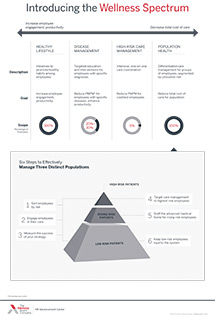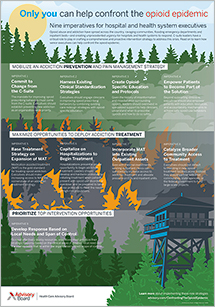Auto logout in seconds.
Continue LogoutMore people die each year from alcohol than opioids, and the number of alcohol-related deaths in the United States is rising—especially among women, Jayne O'Donnell writes for USA Today.
The stunning rise in alcohol deaths
According to a recent analysis from the Institute for Health Metrics and Evaluation at the University of Washington, the number of alcohol-related deaths in the United States rose by 35% between 2007 and 2017. In comparison, the overall death rate in the United States rose by 24% over that time.
That rise in alcohol-related deaths was especially stark among women, at 67%, compared with a 29% increase among men. And while alcohol-related deaths among teenagers were decreased by about 16% from 2007 to 2017, alcohol-related deaths among people ages 45 to 64 rose by about 25%, O'Donnell writes.
According to O'Donnell, drinking alcohol can lead to a variety of illnesses that can result in death, including a number of different cancers along the digestive tract and breast cancer. Anthony Marchetti, an ED doctor at Upson Regional Medical Center, explained that alcohol's "direct toxicity" also can damage individuals' nervous systems.
Further, people who drink alcohol over the course of their lives tend to lose muscle and gain fat, which can lead to increased injuries and illnesses, according to Rick Grucza, an associate professor of psychiatry at Washington University in St. Louis.
Reasons for the increase
The Well Being Trust refers to deaths from drugs, alcohol, and suicide as "despair deaths," and despair, along with stress, are major factors behind the increase in alcohol-related deaths—especially among women, O'Donnell writes.
Ali Mokdad, a professor at the Institute for Health Metrics and Evaluation, said alcohol use disorders manifest differently in men and women. He explained that men often "crash and burn" in public, getting into bar fights or losing their jobs. However, women often start drinking as a way to de-stress from work.
Stefanie Wilder-Taylor, author of "Sippy Cups Are Not for Chardonnay," said she thinks this difference stems from gender norms surrounding stress. "Moms just aren't going to call home and say they're stopping for a couple drinks after work with friends or going to the gym to unwind," she said. Instead, they often go home and drink wine while making dinner, "which can lead to a nightly pattern of excessive drinking," O'Donnell writes.
That type of drinking is fairly common among parents, according to Joseph Garbely, an internal and addiction medicine physician at Caron Treatment Centers. Research shows that 10% of parents believe having at least two drinks a day is reasonable to reduce their stress, Garbely said.
Benjamin Miller, chief strategy officer at the Well Being Trust, said high levels of workplace stress that ramped up during the United States' recent economic recession, combined with loneliness associated with social media and increasing pressures on working mothers, have led to an increase in alcohol consumption.
Overshadowed by the opioid epidemic
But according to O'Donnell, the drastic rise in alcohol-related deaths generally has been overshadowed by the opioid epidemic—even though more U.S. residents die from alcohol than from opioids each year. NIH data show alcohol kills around 16,000 more people each year than opioids. It's also at least three times more expensive to treat alcohol use disorders than opioid use disorders, according to CDC.
Miller said part of the reason opioid-related deaths tend to overshadow alcohol-related deaths is because alcohol is more socially acceptable than opioids. "Culturally, we've made it acceptable to drink but not to go out and shoot up heroin," he said, adding, "A lot of people will read this and say 'What's the problem?'"
Max Griswold, who worked on the Institute for Health Metrics and Evaluation analysis, said, "The story is that no one has noticed this. It hasn't really been researched before."
Industry could be an issue
There are ways states can address alcohol deaths, including taxes on alcohol and limits on when and where alcohol is sold, O'Donnell writes. However, O'Donnell notes that such policies often are difficult to pass because of the influence the liquor industry has with policymakers.
Lisa Smith, an attorney who has been in recovery from alcohol- and cocaine-related use disorders and the author of a memoir entitled "Girl Walks Out of a Bar," said alcohol is "poison, and we're treating it like it's something other than that because there's big corporate money behind it." She said, "A lot of people are getting really rich on something that is toxic to us" (O'Donnell, USA Today, 11/16).
Your top resources for combatting the opioid epidemic—in one place
The opioid epidemic is a complex, multi-dimensional public health problem. Use this list of helpful resources on how hospitals and health systems can play a role to treat opioid addiction and prevent further increase in opioid abuse.
Don't miss out on the latest Advisory Board insights
Create your free account to access 1 resource, including the latest research and webinars.
Want access without creating an account?
You have 1 free members-only resource remaining this month.
1 free members-only resources remaining
1 free members-only resources remaining
You've reached your limit of free insights
Become a member to access all of Advisory Board's resources, events, and experts
Never miss out on the latest innovative health care content tailored to you.
Benefits include:
You've reached your limit of free insights
Become a member to access all of Advisory Board's resources, events, and experts
Never miss out on the latest innovative health care content tailored to you.
Benefits include:
This content is available through your Curated Research partnership with Advisory Board. Click on ‘view this resource’ to read the full piece
Email ask@advisory.com to learn more
Click on ‘Become a Member’ to learn about the benefits of a Full-Access partnership with Advisory Board
Never miss out on the latest innovative health care content tailored to you.
Benefits Include:
This is for members only. Learn more.
Click on ‘Become a Member’ to learn about the benefits of a Full-Access partnership with Advisory Board
Never miss out on the latest innovative health care content tailored to you.


